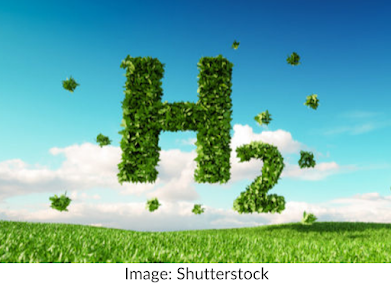Blue, Green, Gray, Pink, or Yellow Hydrogen: What it Means For Generating Cleaner Energy
The sources and processes used to obtain hydrogen are often referred to by color, like grey, blue, green, yellow, and pink. Currently, grey hydrogen is the most common and economical method. Grey hydrogen is derived from natural gas by steam methane reforming (SMR). During SMR, natural gas is combined with hot steam, and the methane from natural gas reacts to form hydrogen and carbon monoxide. Extra water is added to convert the carbon monoxide to carbon dioxide while producing more hydrogen.
The key distinction between grey and blue hydrogen is that blue hydrogen aims for carbon dioxide not to enter the atmosphere. With blue hydrogen, CO2 is stored through Carbon Capture, Utilization, and Storage (CCUS). In SMR, carbon dioxide is stripped from the mixture so that only hydrogen remains. For now, the utilization part of CCUS is currently developing, but with more incentives, carbon utilization could become more popular and benefit various industries like agriculture and geothermal energy. The other option, carbon storage, is where separated carbon dioxide is injected underground. However, it cannot just be injected anywhere; proper carbon dioxide storage requires pressure-specific conditions. A challenge with this is that CO2 could escape by permeating into the soil or becoming displaced by another compound like water. Unfortunately, these CO2 storage and utilization methods are not as efficient as they may seem. In fact, recent research found that the production of blue hydrogen could pollute more than traditional fossil fuels like coal, stating that "the greenhouse gas footprint of blue hydrogen is more than 20 percent greater than burning natural gas or coal for heat and some 60 percent greater than burning diesel oil for heat." So, in general, blue hydrogen looks a lot like gray hydrogen, where the CO2, plus remaining methane, formed through the SMR process, is simply released into the atmosphere. What could be a solution? Green hydrogen is produced through renewable resources by electrolysis. A few months back, I discussed electrolysis in the context of creating superheavy elements. Electrolysis is the process of splitting water (H2O) into its elements, one of which is hydrogen. This requires an electric current that can be powered by renewable energy like wind, solar, hydropower, or even biomass. In this process, the only byproduct is harmless oxygen. Yellow hydrogen specifically uses solar cells to power the electrolysis process, and pink hydrogen uses nuclear energy. Currently, grey hydrogen makes up 95% of hydrogen production due to the comparatively high oct of green hydrogen. However, like with wind and solar energy, as green hydrogen production becomes more common, costs will go down. In 10 years, green hydrogen will likely be comparable in cost to natural gas in the US. Green hydrogen can help reduce emissions in transportation and electricity generation, two of the highest CO2 emitting sectors in the US. Using renewable energy to create hydrogen fuel can help solve the problem of irregular abundance that is present with wind and solar power. So hydrogen can act as an efficient energy storage method for when there may be no wind or sunlight, which could boost the popularity of these renewable energy technologies. Green hydrogen could be sent down existing gas pipelines to provide power for buildings and houses. Additionally, hydrogen can also be used with zero carbon-emitting fuel cells in the transportation sector to power electric vehicles or in electronic devices. While a fuel cell is a bit like a battery, producing electricity through a hydrogen and oxygen chemical reaction, it does not need to be recharged and can store energy for extended periods of time. It does not have the same hindering size and weight of a car battery. Fuel cells can potentially also be applied as power for trucks, aircraft, rail, buses and ships, and even forklifts.With hydrogen being so universally abundant, unlike natural gas or fossil fuels, its supply is unlimited, and unlike solar and wind energy, it is always readily available. Green hydrogen can be produced wherever there is water and a renewable energy source. It can be used where it is made or transported somewhere else, even with existing infrastructure. Moreover, not as much of it needs to be produced to provide power, as hydrogen contains almost three times more energy than fossil fuels. The further expansion of true blue and particularly green hydrogen production methods are critical to employ hydrogen as a source of clean energy to reduce CO2 emissions.Sources:
https://www.energy.gov/eere/articles/hydrogen-clean-flexible-energy-carrier
https://hydrogen-central.com/what-is-ccus-carbon-capture-hydrogen-economy/
https://news.climate.columbia.edu/2021/01/07/need-green-hydrogen/
https://e360.yale.edu/features/green-hydrogen-could-it-be-key-to-a-carbon-free-economy








Comments
Post a Comment